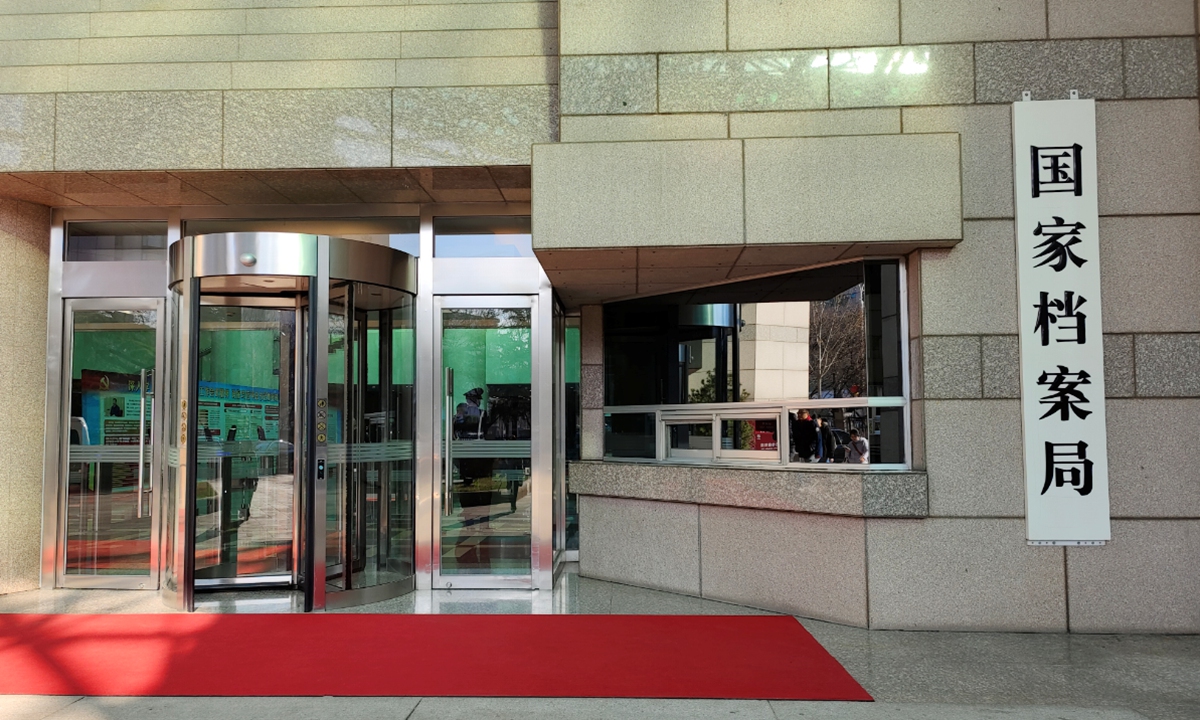ARTS / CULTURE & LEISURE
6th batch of entries added to China Archives Heritage List

National Archives Administration Photo: VCG
On Monday, the National Archives Administration of China announced the sixth batch of entries to the China Archives Heritage List, unveiling 52 newly recognized archival projects. Among them, five are historically significant collections preserved from the Chinese People's War of Resistance Against Japanese Aggression (1931-45).
The year 2025 marks the 80th anniversary of the victory in the War of Resistance Against Japanese Aggression and the World Anti-Fascist War.
Five of the items are invaluable wartime archives prized for their "authenticity and historical significance," Lin Zhenyi, deputy director of the National Archives Administration, told the Global Times.
Unveiled on International Archives Day, one notable addition to this year's list is the "Hundred-Regiment Campaign Archive," a collection of 33 documents that detail command orders, battle plans, frontline reports, and post-campaign summaries from the historic military operation.
Launched in August 1940, the campaign involved 105 regiments, hence its later name. The campaign lasted over four months, and the officers and men of the Eighth Route Army fought 1,824 major and minor engagements, inflicting 20,000 casualties on the Japanese and 5,000 on the troops of the Chinese puppet government, and captured about 50 cannons, 5,900 guns and other military supplies. The Eighth Route Army itself suffered 17,000 casualties.
A document dated August 26, 1940, details how the campaign was officially named "the Hundred-Regiment Campaign" following early victories in the initial battles.
The campaign is thoroughly documented in the archives, capturing the Eighth Route Army's precise grasp of battlefield opportunities, continuous adjustments to strategic priorities, and post-battle assessments, CCTV reported.
For the first time, the mobilization statistics of counties in Jinzhong, North China's Shanxi Province, for the Zhengtai Campaign, are also being made public.
According to the records, more than 10,000 militia members were mobilized in Jinzhong alone. Local residents provided vegetables, chicken, sheep, and fried flour to support the troops, deputy director of the Archives Preservation Department Gui Tengfei told the Global Times.
The newly listed archives also include Taoist records from the Jin (1115-1234) and Yuan (1279-1368) dynasties, Buddhist documents from the Yuan Dynasty, imperial examination archives from the Ming Dynasty (1368-1644), and materials dating from the Qing Dynasty (1644-1911) onward covering major historical events, as well as China's diverse ethnic cultures, local gazetteers and maps, large-scale infrastructure projects, agricultural science, and disaster prevention and mitigation, according to the administration.
The materials span a wide range of formats, including paper documents, bronze inscriptions, stone carvings, bamboo slips, and woodblock prints. Submitting institutions range from archives and museums to libraries, universities, research institutes, and even private enterprises.
Since its launch in 2000, the China Archives Heritage Project has rescued, preserved and developed key historical materials. To date, 250 archival collections have been added to China's Archives Heritage List.
According to Wang Hongmin, head of UNESCO's Memory of the World program at the administration, the newly inscribed 52 items follow UNESCO's evaluation criteria for the Memory of the World Register, including historical, aesthetic, and community significance, demonstrating the item's irreplaceability and global impact, while highlighting Chinese characteristics at the same time. "Documentary heritage demonstrating Chinese civilization's contributions to humanity carries particular weight in the selection process," Wang emphasized.
Wang highlighted that while UNESCO's World Cultural Heritage, Intangible Cultural Heritage, and Natural Heritage lists are widely recognized, its Memory of the World Register remains less known.
"China was actually among the earliest participants in the Memory of the World program globally," Wang clarified, adding that despite China's extraordinarily rich documentary resources, strict quotas apply, each country may nominate only two items per cycle for the global Memory of the World Register, and three for the Asia-Pacific regional register.
To elevate global awareness of China's documentary heritage, the administration has established provincial-level selection mechanisms.
"Provincial reviews help expand our resource pool, providing quality materials for national-level nominations," Wang said. Top-tier entries from China's national list are then recommended for UNESCO's Asia-Pacific and global registers.
"Our goal is to make these sealed archives come alive," Wang emphasized.
"By doing so, we help more people remember history, which is the very purpose of preserving archives."




